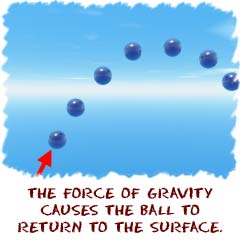Forces of Nature
 Forces are a big part of physics. Physicists devote a lot of time to the study of forces that are found everywhere in the universe. The forces could be big, such as the pull of a star on a planet. The forces could also be very small, such as the pull of a nucleus on an electron. Forces are acting everywhere in the universe at all times.
Forces are a big part of physics. Physicists devote a lot of time to the study of forces that are found everywhere in the universe. The forces could be big, such as the pull of a star on a planet. The forces could also be very small, such as the pull of a nucleus on an electron. Forces are acting everywhere in the universe at all times. Examples of Force
If you were a ball sitting on a field and someone kicked you, a force would have acted on you. As a result, you would go bouncing down the field. There are often many forces at work. Physicists might not study them all at the same time, but even if you were standing in one place, you would have many forces acting on you. Those forces would include gravity, the force of air particles hitting your body from all directions (as well as from wind), and the force being exerted by the ground (called the normal force). Let's look at the forces acting on that soccer ball before you kicked it. As it sat there, the force of gravity was keeping it on the ground, while the ground pushed upward, supporting the ball. On a molecular level, the surface of the ball was holding itself together as the gas inside of the ball tried to escape. There may have also been small forces trying to push it as the wind blew. Those forces were too small to get it rolling, but they were there. And you never know what was under the ball. Maybe an insect was stuck under the ball trying to push it up. That's another force to consider.
Let's look at the forces acting on that soccer ball before you kicked it. As it sat there, the force of gravity was keeping it on the ground, while the ground pushed upward, supporting the ball. On a molecular level, the surface of the ball was holding itself together as the gas inside of the ball tried to escape. There may have also been small forces trying to push it as the wind blew. Those forces were too small to get it rolling, but they were there. And you never know what was under the ball. Maybe an insect was stuck under the ball trying to push it up. That's another force to consider. If there is more than one force acting on an object, the forces can be added up if they act in the same direction, or subtracted if they act in opposition. Scientists measure forces in units called Newtons. When you start doing physics problems in class, you may read that the force applied to the soccer ball (from the kick) could be equal to 12 Newtons.
No comments:
Post a Comment